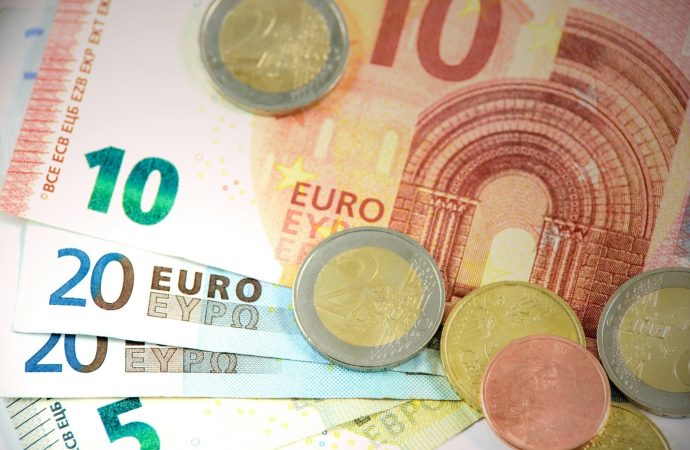How the War in Ukraine is Influencing Global Oil Prices The conflict in Ukraine, which began in 2022, has had profound and far-reaching impacts on the global economy, particularly in the energy sector. The war has disrupted supply chains, altered trade routes, and led to significant fluctuations in oil prices. This article delves into the
How the War in Ukraine is Influencing Global Oil Prices
The conflict in Ukraine, which began in 2022, has had profound and far-reaching impacts on the global economy, particularly in the energy sector. The war has disrupted supply chains, altered trade routes, and led to significant fluctuations in oil prices. This article delves into the various ways the Ukraine conflict has influenced global oil markets, examining the immediate and long-term effects, key players, and potential future scenarios.

Pexels.com
Immediate Disruptions and Supply Chain Issues
The onset of the war saw an immediate spike in oil prices due to the disruption of supply chains. Russia, a major global oil producer, faced sanctions from Western countries, leading to reduced exports. This reduction created a supply shortfall in the market, driving prices up. Many countries, especially in Europe, which rely heavily on Russian oil, had to scramble for alternative sources, further exacerbating the price surge.
Analysis Table: Immediate Impact on Oil Prices
| Aspect | Impact Description |
| Supply Chain Disruption | Sanctions on Russia reduced oil exports drastically |
| Price Surge | Immediate increase in global oil prices due to shortage |
| Alternative Sourcing | Increased demand for oil from other regions |
Sanctions and Their Long-Term Effects
The sanctions imposed on Russia have not only affected its ability to export oil but also its capacity to invest in oil extraction and production infrastructure. Over time, this is likely to reduce Russia’s oil output, affecting global supply. Additionally, sanctions have pushed countries to reconsider their energy policies, accelerating the shift towards renewable energy and other alternative sources.
Comparative Table: Pre- and Post-Sanctions Oil Dynamics
| Parameter | Pre-Sanctions | Post-Sanctions |
| Russian Oil Exports | Stable and significant | Reduced significantly |
| Global Oil Prices | Relatively stable | Highly volatile and increased |
| Energy Policy Shifts | Gradual shift towards renewables | Accelerated shift towards renewables |
European Energy Crisis
Europe, particularly Germany and Italy, have been heavily reliant on Russian natural gas and oil. The war has forced these countries to seek alternatives, leading to an energy crisis. LNG (liquefied natural gas) imports from the US and Qatar have increased, but infrastructure limitations and high costs remain significant challenges. The crisis has also accelerated the development of renewable energy projects across the continent.
OPEC’s Role and Response
The Organization of the Petroleum Exporting Countries (OPEC) has played a crucial role in stabilizing oil prices during the Ukraine conflict. OPEC has had to navigate the delicate balance between increasing production to stabilize prices and managing internal agreements among member states. Their decisions have had a significant impact on global oil prices, often countering the volatility caused by the conflict.
US Shale Oil Production
The US shale oil industry has also responded to the global supply shortfall. Higher oil prices have made shale oil extraction more profitable, leading to increased production. However, environmental concerns and regulatory issues continue to pose challenges. The increased US production has helped mitigate some of the supply issues, but it is not a complete solution to the disruptions caused by the war.
Global Economic Implications
The fluctuations in oil prices have broader economic implications. Higher energy costs contribute to inflation, affecting everything from transportation to manufacturing. Developing countries, in particular, are hit hard as they lack the economic resilience to absorb these price shocks. Conversely, oil-exporting countries have seen increased revenues, but this has often come at the cost of global economic stability.
Future Scenarios and Strategic Adjustments
Looking ahead, several scenarios could play out depending on the duration of the conflict and geopolitical developments. A prolonged war could lead to sustained high oil prices and further economic instability. Conversely, a resolution and lifting of sanctions could stabilize the market. In either scenario, countries are likely to continue diversifying their energy sources to reduce dependence on any single supplier.
Comparative Table: Key Influences on Global Oil Prices
| Influence Factor | Description | Impact on Prices |
| Russian Sanctions | Reduced export capacity, investment limitations | Increased |
| European Energy Crisis | Shift from Russian oil to alternative sources | Increased volatility |
| OPEC Production | Balancing act between stabilizing prices and internal quotas | Stabilizing |
| US Shale Oil Production | Increased production due to higher prices | Mitigating |
| Global Economic Impact | Inflation and economic instability due to higher energy costs | Mixed |
| Future Geopolitical Developments | Potential resolution or prolongation of conflict | Uncertain |
By understanding these dynamics, policymakers and businesses can better navigate the complex landscape of global oil markets affected by geopolitical conflicts such as the war in Ukraine.
Conclusion
The war in Ukraine has highlighted the interconnectedness of global energy markets and the vulnerabilities inherent in heavy reliance on specific regions or sources. The immediate and long-term impacts on oil prices have been profound, prompting strategic shifts and highlighting the need for a more resilient and diversified global energy strategy. As the situation evolves, continuous monitoring and adaptive policies will be crucial in navigating the challenges ahead.
















